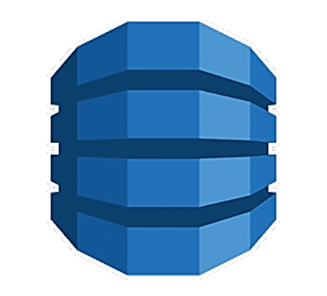Database Management Systems (DBMS) are essential for handling data storage needs in the world of IT. As an immense volume of data is generated every day on the internet and business applications combined, a large portion of this data is managed by relevant databases. This creates the need to handle raw data which is scheme-less and non-relational in nature. In the DBMS arena, this creates a major concern of providing an inexpensive and faster CRUD (Create, Read, Update and Delete) process as it has to manage the additional joining and maintaining of relationships from the different types of data. This makes Amazon DynamoDB an ideal solution. This raises the question of DynamoDB pricing frequently.
However, no single NoSQL offers a comprehensive solution that can handle unstructured big data in a way that provides customer satisfaction and maximum value for the business. NoSQL, short for Not Only SQL database, provides a method to store data and retrieve reports apart from the tabular relations utilized in the relational databases.
NoSQL technology was popular earlier and was extensively used by major data generators, such as Google, Facebook, Amazon and others who required large-scale database management systems which could help write and read data anywhere around the globe, and at the same time offering scalability and delivering performance to massive data sets and millions of users worldwide. From the numerous NoSQL services available in the market today, the DynamoDB storage cost is significantly more attractive and feasible.
About DynamoDB from Amazon
Amazon’s DynamoDB is the most preferred NoSQL cloud database offered by the world’s leading online service provider. DynamoDB is a completely managed NoSQL cloud database platform from Amazon which is designed for storing, processing and accessing data with high performing and scale-centric applications.

About DynamoDB from Amazon
DynamoDB is an extremely fast and immensely flexible NoSQL database service for comprehensive types of applications which require constant, single-digit millisecond latency for varying scale. This NoSQL supports key-value store and document models. It has the ability to scale and has a flexible schema, which allows users to easily change the way data is structured and can run multiple queries against it.
Today’s web-based applications frequently face challenges regarding scaling as customers grow and there is a noticeable increase in data as well as traffic. Using DynamoDB NoSQL database service, developers can scale cloud-based applications and store data on off-site servers as well as retrieve it over other Amazon Web Service (AWS) accessibility zones to provide optimal durability and integrated accessibility.
DynamoDB Cost Calculator
The DynamoDB cost calculator on the website allows buyers to measure the expense of reading, writing and storing data in their DynamoDB tables. It also shows the additional optional features that developers can choose to activate.

DynamoDB Cost Calculator
DynamoDB streams pricing comes in two distinct capacity modes – DynamoDB On-Demand capacity mode and DynamoDB Provisioned capacity mode. There is a significant difference between DynamoDB on-demand pricing and DynamoDB provisioned pricing. The DynamoDB On-Demand capacity mode is more popular.
DynamoDB On-Demand Pricing
Let’s check out the features and pricing for DynamoDB On-Demand capacity mode:
The DymanoDB On-Demand capacity mode lets you pay per request for every instance of data read and write by applications on your tables. There is no need to specify how much read and write you estimate the application to perform as DynamoDB automatically calculates your workload requirement and increases or decreased the capacity accordingly.
- Read request unit – API requests to read data from your table are charged in reading request units. The platform read requests can be Strongly Consistent, Eventually Consistent or Transactional. Any Strongly Consistent read request of as much as 4 KB uses 1 request unit. For requests larger than 4 KB, extra read request units are needed. For requests up to 4 KB, Eventually, Consistent read requests need ½ read request unit, while Transactional read request needs 2 read request units.
- Write request unit – API request to write data on your table is charged in write request units. A Standard write request unit can write items up to 1 KB. For larger than 1 KB items, extra write request units are required. A Transactional write uses 2 write request units.
- Replicated write request unit – For DynamoDB global tables, the details of users are automatically written at multiple AWS regions according to users’ choice. Every write occurs in the local Region and the replicated Regions as well.
- Streams read request unit – Every GetRecords API request to DynamoDB Streams is known as a streams read request unit. Every stream read request unit can return as much as 1 MB of data.
- Transactional read / write requests – A transactional read or transactional write request in DynamoDB is different from standard read and write requests as it guarantees all operations within a single transaction either succeed or fail as a set.
DynamoDB Provisioned Pricing
In the DynamoDB provisioned capacity mode, the auto-scaling feature allows you to adjust their tables automatically according to the specified rate of usage. This ensures that you get optimal application performance at a minimal cost.
Check out the features and pricing of DynamoDB provisioned capacity mode below:
- Read capacity unit – Every API call for reading data from your table is a read request. These are labeled as Strongly Consistent, Eventually Consistent, or Transactional. One RCU is required to read items up to 4 KB in size in the Strongly Consistent request every second. Reading items over 4 KB in size requires extra RCUs. Two RCUs are sufficient to perform two Eventually Consistent read requests on items over 4 KB, every second. However, for Transactional read requests, two RCUs are needed to perform one read every second for items up to 4 KB.
- Write capacity unit – Every API call to write data in your table is a written request. One WCS is ideal to perform one Standard write request per second for items up to 1 KB in size. Transactional write requests need two WCUs for one write request per second for items up to 1 KB. Items larger than 1 KB require assigning additional WCUs.
- Replicate write capacity unity – DynamoDB writes data automatically at multiple AWS regions when you use its global tables. Every write is written in the local Region and the replicated region of choice.
- Streams read request unit – A streams read request is any GetRecords API call to DynamoDB Streams. Individual streams read request units can return a maximum of 1 MB of data.
- Transactional read / write request – A Transactional read or write differs from the Standard read or write in DynamoDB because it ensures that every operation in an individual transaction either fails or succeeds as a set.
For complete information on DynamoDB pricing, it is advisable to visit the official Amazon Web Services DynamoDB cost calculator page. You will get the latest and updated DynamoDB storage cost there.